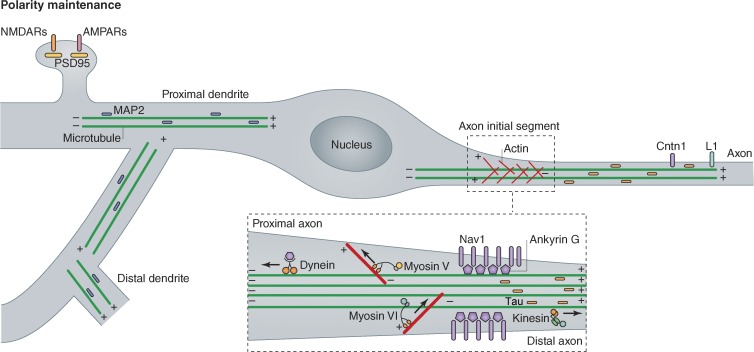Figure 2.
Polarity maintenance and trafficking of somatodendritic and axonal proteins. Neurons are polarized into two main compartments: the somatodendritic domain and the axon. These domains are characterized by the underlying cytoskeleton and their unique protein signatures. The axonal cytoskeleton is defined by its uniform microtubule orientation where each microtubule is oriented with its plus end away from the cell body, while the dendrites contain a mixture of microtubules oriented in both directions. The proximal axon is characterized by a structure known as the axon initial segment (AIS, see inset). This highly ordered structure creates a diffusion barrier between the axonal compartment and the rest of the cell. F-actin is responsible for the cytoplasmic barrier, while sodium channels anchored by Ankyrin G form the basis of the plasma membrane barrier. Tau is retained in the axon by a microtubule-based filter at the AIS. Molecular motors (including kinesin, dynein, and myosin) then use the underlying cytoskeleton to restrict cargo transport to either the axon (such as Cntn1 and L1) or the dendrites (such as PSD95, AMPARs, and NMDARs).

